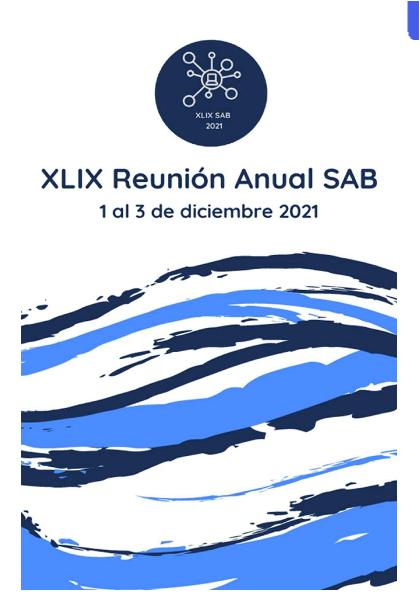Mostrar el registro sencillo del ítem
dc.contributor.author
Felsztyna, Iván

dc.contributor.author
Villarreal, Marcos Ariel

dc.contributor.author
Garcia, Daniel Asmed

dc.contributor.author
Miguel, Virginia

dc.contributor.other
Delfino, Jose Maria

dc.contributor.other
Celej, Maria Soledad

dc.contributor.other
Mangialavori, Irene Cecilia

dc.contributor.other
Acierno, Juan Pablo

dc.date.available
2023-03-02T10:58:09Z
dc.date.issued
2021
dc.identifier.citation
Assessment of insect RDL receptor homology models for virtual screening: impact of the template conformational state in pLGICs; XLIX Reunión Anual de la Sociedad Argentina de Biofísica; Buenos Aires; Argentina; 2021; 86-86
dc.identifier.isbn
978-987-27591-9-3
dc.identifier.uri
http://hdl.handle.net/11336/189317
dc.description.abstract
Pentameric ligand-gated ion channels (pLGICs) constitute a large family of transmembrane receptors. This family includes the γ-aminobutyric acid (GABA) receptors. The RDL homopentamer is the main GABA receptor in the insect nervous system. It presents structural differences with vertebrate GABAA receptors that result in a particular pharmacological profile. Therefore, the RDL receptor (RDL-R) is one of the most relevant targets for insecticides. Due to the difficulties related to pLGICs crystallization, many studies have used homology modeling to obtain the structure of these proteins and to perform computational studies about their ligands binding. However, the impact that the template conformational state could have on the model virtual screening (VS) performance has not been studied in detail. The aim of this work is to obtain RDL-R homology models in different conformational states and to evaluate their performance in a retrospective VS of channel-blocker insecticides. Fifteen RDL-R models were obtained, based on different pLGICs templates, whose structures represent three conformational states: closed, open and desensitized. With these models, molecular docking assays were performed with a set of active ligands and decoys. To evaluate the VS performance, the area under the ROC curve and the BEDROC score were calculated for each of the models. In addition, molecular dynamics simulations (MDS) were performed for the best models among each of the conformational states. The initial structures were obtained from the docking poses of the insecticide fipronil. VS performance parameters showed variations according to the conformational state of the templates. The correlations of these parameters with different variables were evaluated to analyze which were the determinant factors for a correct identification of active ligands. Structural properties of the channel pore, such as the solvent-accessible area and volume and the pore diameter at some specific residues could explain the differences in VS performance. The best results were obtained for a model based on a closed template. MDS confirmed that the expected interactions between the binding site residues and fipronil were present only in the closed model. These results show that different templates should be explored to obtain accurate RDL homology models, particularly focusing on the template conformational state. The model that presented the best performance parameters could be used in a prospective VS.
dc.format
application/pdf
dc.language.iso
eng
dc.publisher
Sociedad Argentina de Biofísica
dc.rights
info:eu-repo/semantics/openAccess
dc.rights.uri
https://creativecommons.org/licenses/by-nc-sa/2.5/ar/
dc.subject
GABAA receptor
dc.subject
Insecticide
dc.subject
Docking
dc.subject
Virtual screening
dc.subject
Fipronil
dc.subject.classification
Biofísica

dc.subject.classification
Ciencias Biológicas

dc.subject.classification
CIENCIAS NATURALES Y EXACTAS

dc.title
Assessment of insect RDL receptor homology models for virtual screening: impact of the template conformational state in pLGICs
dc.type
info:eu-repo/semantics/publishedVersion
dc.type
info:eu-repo/semantics/conferenceObject
dc.type
info:ar-repo/semantics/documento de conferencia
dc.date.updated
2022-11-09T16:50:28Z
dc.journal.pagination
86-86
dc.journal.pais
Argentina

dc.journal.ciudad
Ciudad Autónoma de Buenos Aires
dc.description.fil
Fil: Felsztyna, Iván. Universidad Nacional de Córdoba. Facultad de Ciencias Exactas, Físicas y Naturales. Departamento de Química. Cátedra de Química Biológica; Argentina. Consejo Nacional de Investigaciones Científicas y Técnicas. Centro Científico Tecnológico Conicet - Córdoba. Instituto de Investigaciones Biológicas y Tecnológicas. Universidad Nacional de Córdoba. Facultad de Ciencias Exactas, Físicas y Naturales. Instituto de Investigaciones Biológicas y Tecnológicas; Argentina
dc.description.fil
Fil: Villarreal, Marcos Ariel. Consejo Nacional de Investigaciones Científicas y Técnicas. Centro Científico Tecnológico Conicet - Córdoba. Instituto de Investigaciones en Físico-química de Córdoba. Universidad Nacional de Córdoba. Facultad de Ciencias Químicas. Instituto de Investigaciones en Físico-química de Córdoba; Argentina. Universidad Nacional de Córdoba. Facultad de Ciencias Químicas. Departamento de Química Teórica y Computacional; Argentina
dc.description.fil
Fil: Garcia, Daniel Asmed. Consejo Nacional de Investigaciones Científicas y Técnicas. Centro Científico Tecnológico Conicet - Córdoba. Instituto de Investigaciones Biológicas y Tecnológicas. Universidad Nacional de Córdoba. Facultad de Ciencias Exactas, Físicas y Naturales. Instituto de Investigaciones Biológicas y Tecnológicas; Argentina. Universidad Nacional de Córdoba. Facultad de Ciencias Exactas, Físicas y Naturales. Departamento de Química. Cátedra de Química Biológica; Argentina
dc.description.fil
Fil: Miguel, Virginia. Consejo Nacional de Investigaciones Científicas y Técnicas. Centro Científico Tecnológico Conicet - Córdoba. Instituto de Investigaciones Biológicas y Tecnológicas. Universidad Nacional de Córdoba. Facultad de Ciencias Exactas, Físicas y Naturales. Instituto de Investigaciones Biológicas y Tecnológicas; Argentina. Universidad Nacional de Córdoba. Facultad de Ciencias Químicas. Departamento de Química Teórica y Computacional; Argentina
dc.relation.alternativeid
info:eu-repo/semantics/altIdentifier/url/https://biofisica.org.ar/reuniones-cientificas/reunionsab-previas/
dc.conicet.rol
Autor

dc.conicet.rol
Autor

dc.conicet.rol
Autor

dc.conicet.rol
Autor

dc.coverage
Nacional
dc.type.subtype
Reunión
dc.description.nombreEvento
XLIX Reunión Anual de la Sociedad Argentina de Biofísica
dc.date.evento
2021-10-01
dc.description.ciudadEvento
Buenos Aires
dc.description.paisEvento
Argentina

dc.type.publicacion
Book
dc.description.institucionOrganizadora
Sociedad Argentina de Biofísica
dc.source.libro
Sociedad Argentina de Biofísica: XLIX Reunión Anual SAB
dc.date.eventoHasta
2021-11-03
dc.type
Reunión
Archivos asociados
